How to Purify Water Using Boiling
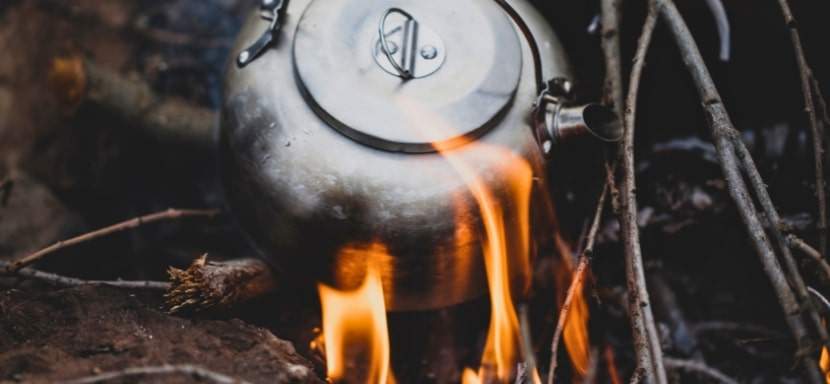
When you’re miles away from civilization, lost in the wilderness, or don’t trust what’s coming out of your tap, the idea of pure, clean drinking water starts to sound like a mythical oasis. Maybe it’s all those survival shows you’ve binged, but suddenly, you’re eyeing that murky stream with new suspicion.
Before you reach for that “natural” water source, let’s chat about something that might save your intestines: boiling. Yes, boiling your water is one of the simplest and most effective methods of ensuring you don’t regret your hydration choices.
Key Points
- Kills Pathogens: Boiling destroys bacteria, viruses, and parasites.
- Boil 1-3 Minutes: Ensure effective purification by boiling for at least 1-3 minutes.
- Easy & Cheap: Boiling is a simple, low-cost way to purify water.
Why Boiling Water Works
Here’s the deal: our water often has unwanted hitchhikers. We’re talking about bacteria, viruses, parasites, and all those microscopic nasties you can’t see but would rather not ingest. Boiling water is like sending them a scalding eviction notice. Once the water reaches 100°C (or 212°F for my Fahrenheit friends), it’s hot enough to kill off most pathogens lurking there.
The beauty of boiling water is in its simplicity. There’s no need for fancy filters or complicated devices—just a heat source, a pot, and some patience, and voila, safe drinking water. But before you go chucking a pot on the stove, let’s get into the finer points of how to do it right.
How to Boil Water for Purification
Now, boiling water sounds like a no-brainer, but there are a few steps to follow to ensure you’re doing it correctly. Trust me, you don’t want to rush this, or you might as well not bother at all.
Step 1: Gather Your Water
First, find a water supply. If you’re in the great outdoors and pulling water from a stream, lake, or puddle (hopefully not a puddle, but hey, desperate times), try to choose the most transparent water you can find. If it’s looking murky or full of debris, you’ll want to filter it first. You don’t need anything fancy—a simple cloth or bandana will do. This step helps to get rid of large particles before you start boiling.
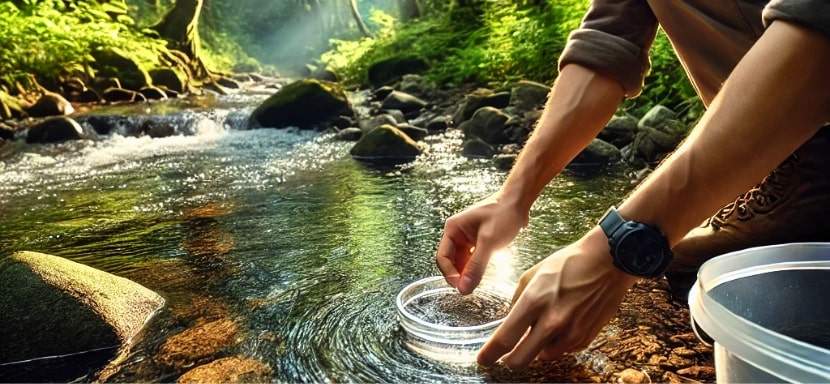
Step 2: Bring to a Rolling Boil
Here’s where you might think, “Just heat it, and we’re good to go, right?” Not quite. First, you must start a fire in the wilderness without a stove. Gathering dry wood, kindling, and a reliable firestarter like matches or flint is vital. Bring your water to a rolling boil once you’ve got your fire going. That means the water should be bubbling like crazy, not just those lazy bubbles you get at a slow simmer. This is crucial because that’s the temperature where bacteria, viruses, and parasites start losing the battle.
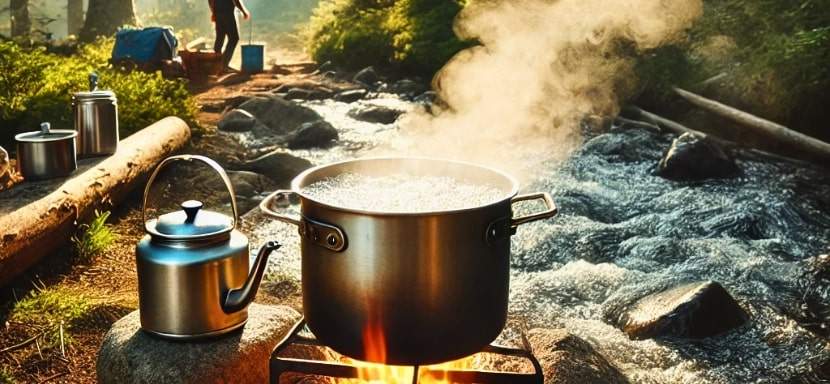
Step 3: Keep It Boiling
Don’t jump the gun and take the pot off the stove too soon. The rule of thumb is to boil your water for at least 1 minute. If you’re up in the mountains, say above 6,500 feet (you know, where the air is thin and boiling points are lower), you’ll need to keep it going for about 3 minutes. Time it—don’t just eyeball it! This extra time ensures the heat has done its job, especially in higher altitudes where water boils at a lower temperature.
Did You Know?
Boiling water at higher altitudes requires more time to purify because water boils at a lower temperature in thinner air. This makes it less effective at killing pathogens unless boiled for longer—usually 3 minutes instead of the usual 1!
Benefits of Boiling Water for Purification
Boiling has a few other perks besides the obvious—getting clean water — that might not immediately come to mind.
Low-Cost and Accessible
The beauty of boiling is that you don’t need to be Bear Grylls to do it. All you need is heat from a stove, a campfire, or a solar cooker. There’s no need for chemical additives or pricey filters, making it an incredibly cost-effective way to purify your water, especially in emergencies or remote areas.
Effective Against Most Contaminants
Boiling is highly effective against most harmful microorganisms, including bacteria (like E. coli), viruses (like norovirus), and parasites (like Giardia). While it won’t remove chemical contaminants or heavy metals, it’s still one of the best methods for dealing with biological threats in your water.
Works in Various Environments
Whether camping, dealing with a power outage, or avoiding questionable tap water while traveling, boiling is a reliable and flexible option. It works anywhere you can make a fire or generate heat. If you’re in a pinch, you can boil water in a microwave, although I wouldn’t recommend trying that in the wilderness.
Drawbacks of Boiling Water
Now, before you get too excited and start boiling all the water in sight, it’s worth noting that boiling, while effective, isn’t a cure-all. Here’s the catch:
Does Not Remove Chemical Contaminants
Boiling will kill bacteria, viruses, and parasites but won’t kill chemicals, pesticides, or heavy metals in the water. If you’re pulling water from a source near agricultural runoff or an industrial area, you’ll need a different solution—like activated charcoal filters or distillation—to handle those nasties.
Takes Time and Fuel
Boiling requires both time and a heat source. If fuel or electricity is limited, boiling might not be the most efficient method. And if you’re thirsty, waiting for your water to boil and cool down can feel like an eternity.
Cooling and Storing Boiled Water
After boiling your water, don’t be tempted to chug it down immediately. Let it cool off—burning your mouth won’t make you any happier, I promise. Once cooled, store it in a clean, covered container. Seal it properly if you’re in the wild to prevent further contamination.
How Long Does Boiled Water Stay Safe?
Once you’ve boiled your water, drinking for about 24 hours should stay safe if stored properly. If you’re outdoors and don’t have access to a refrigerator, aim to use it within a day. Any longer, you’ll want to boil it again just to be sure.
When to Use Boiling for Water Purification
There are times when boiling water is your best option, and knowing when to rely on it can save you a lot of stomach trouble.
During Emergencies
Your regular water supply may be compromised when natural disasters like floods, hurricanes, or earthquakes strike. Boiling is often recommended to ensure your water is safe in these situations. Local authorities usually advise residents to boil their water during such emergencies.
While Camping or Hiking
If you’re an outdoor enthusiast, boiling water is a skill you’ll want in your back pocket whether camping by a pristine lake or hiking up a mountain trail, purifying your water without fancy gadgets gives you flexibility and peace of mind.
Traveling in Developing Areas
Traveling abroad can be thrilling but can also come with gastrointestinal hazards. In areas where the water supply isn’t as rigorously treated as you’re used to, boiling your drinking water is wise to avoid illnesses like traveler’s diarrhea.
Alternatives to Boiling Water
While boiling is a trusted method, it’s not always convenient. Depending on your situation, here are a few other options you might consider.
Water Filters
Portable water filters are a fantastic option, especially for hikers and campers. Many can remove bacteria, parasites, and even some viruses. However, they won’t remove chemical contaminants, so they’re best used in areas where the water is biologically contaminated but chemically safe.
Chemical Purification
Another way to purify water is to use iodine or chlorine tablets, especially in emergencies. These tablets are lightweight and easy to carry, making them ideal for outdoor adventures. However, they can leave an unpleasant taste and aren’t effective against all contaminants.
UV Light Treatment
Portable UV light purifiers are becoming more popular for water purification. They’re effective against microorganisms, and they work quickly. However, like filters, they won’t remove chemical contaminants and require a power source (batteries or solar).
Boiling Water vs. Other Methods: Which is Best?
The best water purification method depends on your specific needs. Boiling is the most reliable method for killing pathogens but requires time, fuel, and a heat source. Filters and UV purifiers are faster and more portable but don’t tackle all contaminants.
Boiling should be your first choice if you’re in a survival situation or dealing with a contaminated municipal water supply. If you’re just trying to be extra cautious while hiking or traveling, a combination of filtering and UV purification can offer added security.
How to Make Boiling More Efficient
So, you’ve committed to boiling your water, but now you’re wondering how to make the process faster or more efficient. Here are a few tips.
Pre-Filter the Water
Before you boil, remove as many impurities as possible by pre-filtering the water through a cloth or coffee filter. This makes the water look cleaner and helps it cook more efficiently.
Use a Lid
Covering your pot with a lid traps the heat and helps the water boil faster. This is especially useful if you’re trying to conserve fuel.
FAQs
How long do I need to boil water to purify it?
Water should be boiled for at least 1 minute. At higher altitudes (above 6,500 feet), it should be boiled for 3 minutes.
Does boiling water remove all contaminants?
Boiling removes most bacteria, viruses, and parasites but does not remove chemical contaminants like pesticides or heavy metals.
Can I boil water in the microwave?
Yes, you can boil water in a microwave if you have no other option, but it must reach a full rolling boil for it to be effective.
How long does boiled water stay safe to drink?
Boiled water can be stored for up to 24 hours in a clean, covered container.
Is boiling water better than using a filter?
Boiling is more effective at killing pathogens, while filters are quicker and remove larger particles, but they may not eliminate viruses.
What should I do if my water is cloudy?
If your water is cloudy, pre-filter it through a cloth or coffee filter before boiling to remove debris and sediment.
Conclusion: How to Purify Water By Boiling
Boiling water is a simple, effective, and accessible method for purifying water in the wilderness, facing an emergency, or traveling. While it might take a little time and patience, the peace of mind that comes with knowing your water is safe to drink is well worth it.
Following the steps outlined above, you’ll be well-prepared to purify your water and stay hydrated, no matter where you are.
Boiling Water for Purification: Essential Facts
Boiling water is one of the oldest and most reliable methods for making it safe to drink. Here are some critical facts about purifying water through boiling that highlight its simplicity, effectiveness, and limitations.
- Kills Most Pathogens: Boiling eliminates harmful bacteria, viruses, and parasites in water.
- Boil Time: Water should be boiled for at least 1 minute; at high altitudes (above 6,500 feet), it should be boiled for 3 minutes.
- Won’t Remove Chemicals: Boiling doesn’t eliminate chemical contaminants like pesticides or heavy metals.
- Works Anywhere: Boiling can be done anywhere as long as you have a heat source, making it ideal for camping or emergencies.
- Energy-Intensive: Boiling requires fuel or electricity, which may not be ideal with limited resources.
- Doesn’t Improve Taste: While it purifies water, boiling does not improve its taste and may concentrate minerals or impurities.
- Easy to Learn: Boiling water requires no specialized equipment or training—just heat and time.
More Survival Tips and Advice
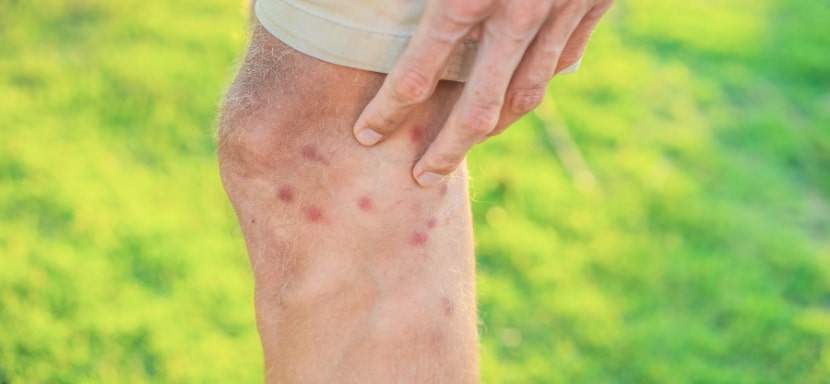
How to Protect Yourself From Insects in the Wild
There’s nothing like being out in the wild—birdsong echoing through the trees, the fresh scent of earth, and a deep sense of peace that makes you think, “Ah, this is what life is about.” But then comes the buzzing. Mosquitoes, ticks, and flies swoop in like uninvited...

How to Identify Poisonous Plants
Exploring the great outdoors can be incredibly refreshing, offering a chance to reconnect with nature and unwind from daily stresses. However, it also comes with its fair share of risks. Chief among them? Poisonous plants. These hidden hazards can turn a peaceful...
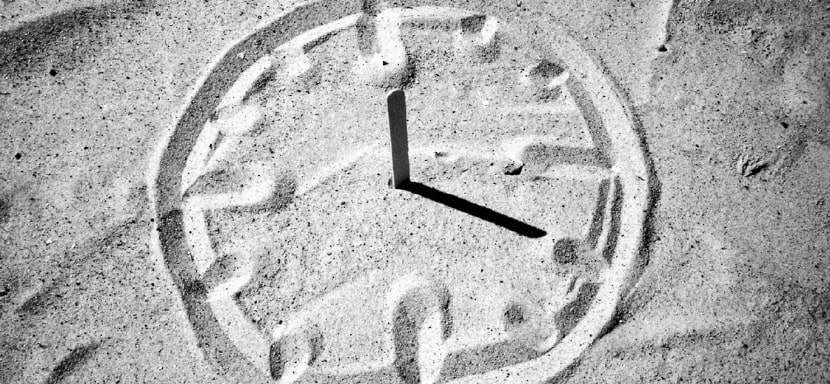
How to Use the Sun to Tell Time
Using the sun to tell time sounds like a Robinson Crusoe novel. Imagine being stranded on a desert island with no phone, clock, or sundial. You'd still have one incredibly reliable resource: the sun. It’s been doing its thing for billions of years, and by the looks of...
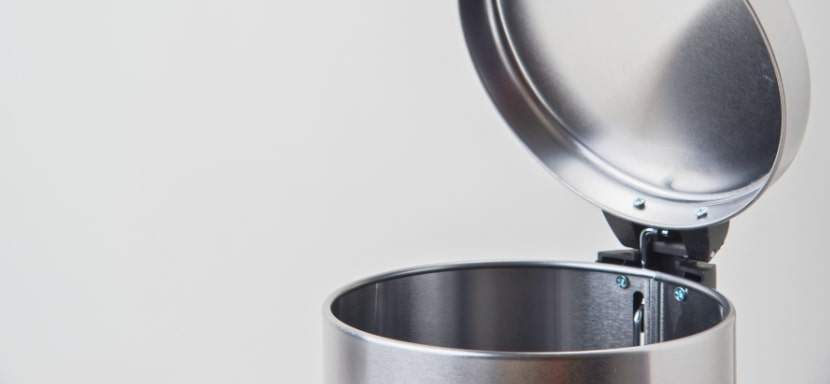
How to Build a Faraday Cage
Have you ever had one of those moments when your phone seems to be on its own personal field trip through Wi-Fi signals, Bluetooth, and all kinds of electromagnetic noise? Well, I have. The endless hum of invisible waves flying through the air makes you wonder—how can...

How to Make a Torch for Light
Creating your torch for light is not only a practical skill but also a rewarding craft. Whether preparing for a camping trip, looking for a unique DIY project, or wanting a reliable light source for emergencies, making a torch can be an enjoyable and valuable...
More Survival Scenarios

How to Survive a Layoff
When the Floor Falls Out: The Reality of a Layoff Layoffs feel personal—even when they're not. One day, you're responding to Slack messages and forwarding emails. Next, you're staring at your monitor as it logs you out... for good. Whether it's a restructuring, a...

How to Survive a Drug Test
The Cup, The Room, The Truth I never imagined I’d be so emotionally invested in a paper cup. But there I was, standing under the fluorescent hum of a strip-mall clinic, trying to recall the last time I ate a poppy seed bagel. That’s the thing about drug tests—they...
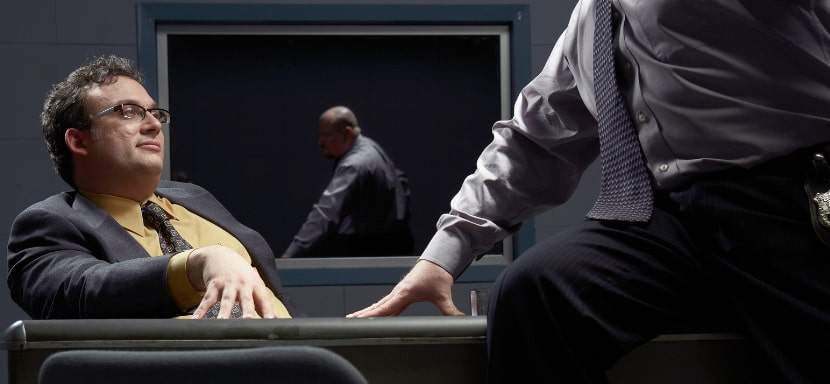
How to Survive an Interrogation
If you've ever been caught in the crosshairs of an overly enthusiastic mall cop or stared down by someone in a uniform with a clipboard and a glare, you’ve felt it — the chilly fingers of interrogation anxiety. And while most of us imagine interrogation scenes as...
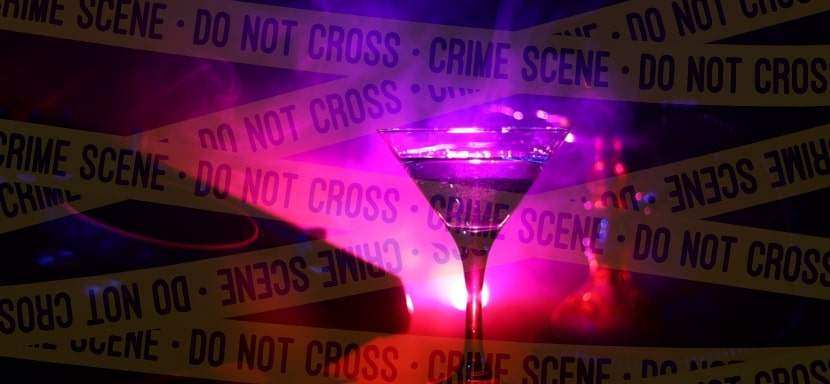
How to Survive a Nightclub Shooting
Nightclubs pulse with life—lights flashing, music pounding, bodies packed tight on the dance floor. It’s a place to escape, feel the rhythm, and lose yourself in the crowd. But that same energy can turn deadly in seconds, transforming a night of fun into one of the...

How to Survive a Bachelor Party
A bachelor party is a delicate mix of celebration, chaos, and questionable decision-making, wrapped in the noble intention of sending the groom off into married life with a night he’ll (hopefully) remember. It’s a ritual as old as time—well, as old as men deciding...
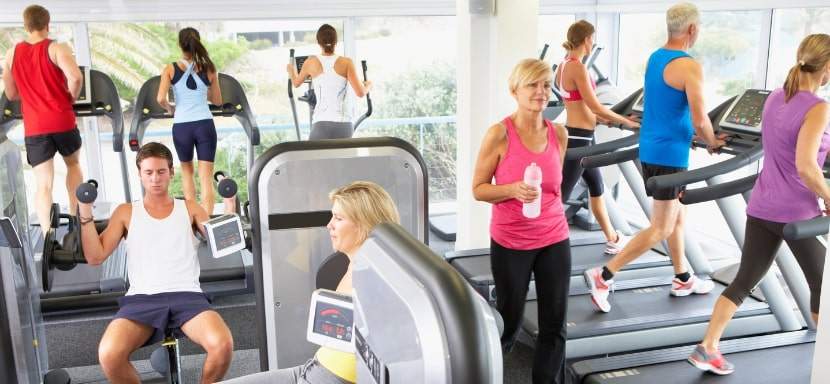
How to Survive Your First Time at the Gym
Walking into a gym for the first time can feel like stepping into an alien world. The machines hum with purpose, the regulars move confidently, and you’re left standing there, clutching your water bottle, wondering whether you’re in the right place—or on the right...
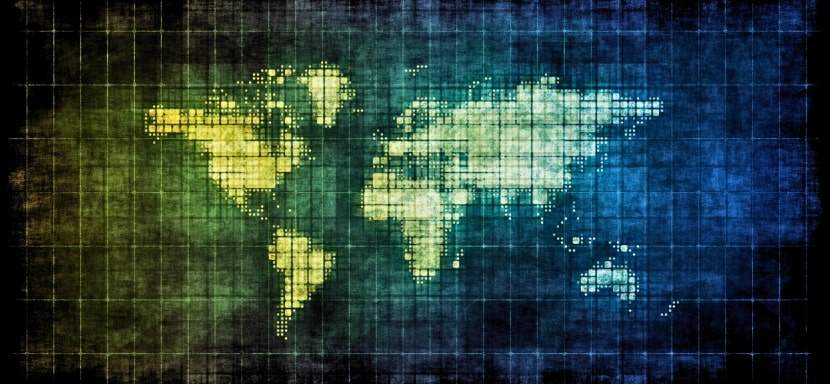
How to Survive a Worldwide Communications Breakdown
Imagine waking up to silence. Your phone doesn’t buzz, your email won’t load, and even your local radio station crackles with static. A worldwide communications breakdown has hit. What next? For many, this doomsday scenario may sound like the opening lines of a...
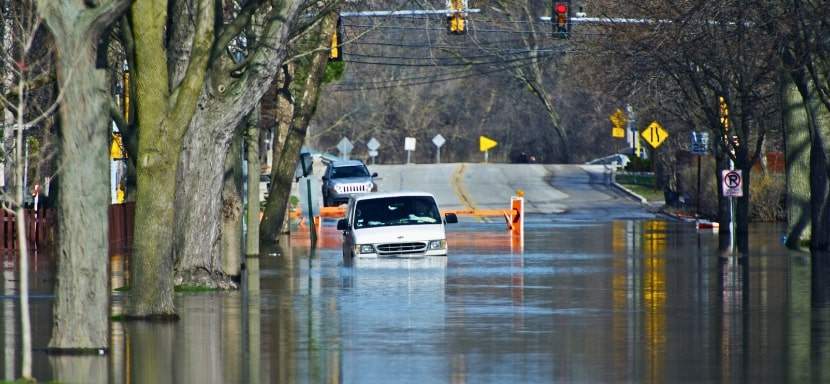
How to Survive a Flash Flood While Driving
Surviving a flash flood while driving requires quick thinking, calmness, and a solid plan to ensure your safety. Preparation can make all the difference between a close call and a catastrophe in emergencies like this. This guide provides practical advice to protect...
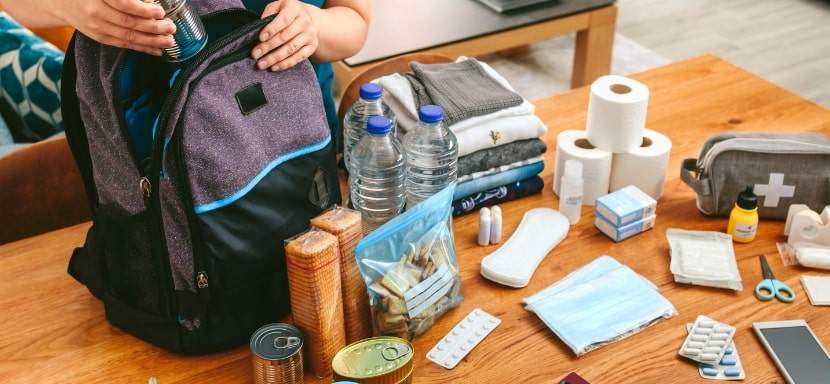
How to Build an Emergency Kit
Emergencies don’t knock politely at the door. They barge in, uninvited, like a distant relative with a penchant for drama, turning your world upside down without warning. Whether it’s a power outage, a natural disaster, or an unexpected evacuation, the key to staying...

How to Protect Yourself From Insects in the Wild
There’s nothing like being out in the wild—birdsong echoing through the trees, the fresh scent of earth, and a deep sense of peace that makes you think, “Ah, this is what life is about.” But then comes the buzzing. Mosquitoes, ticks, and flies swoop in like uninvited...
